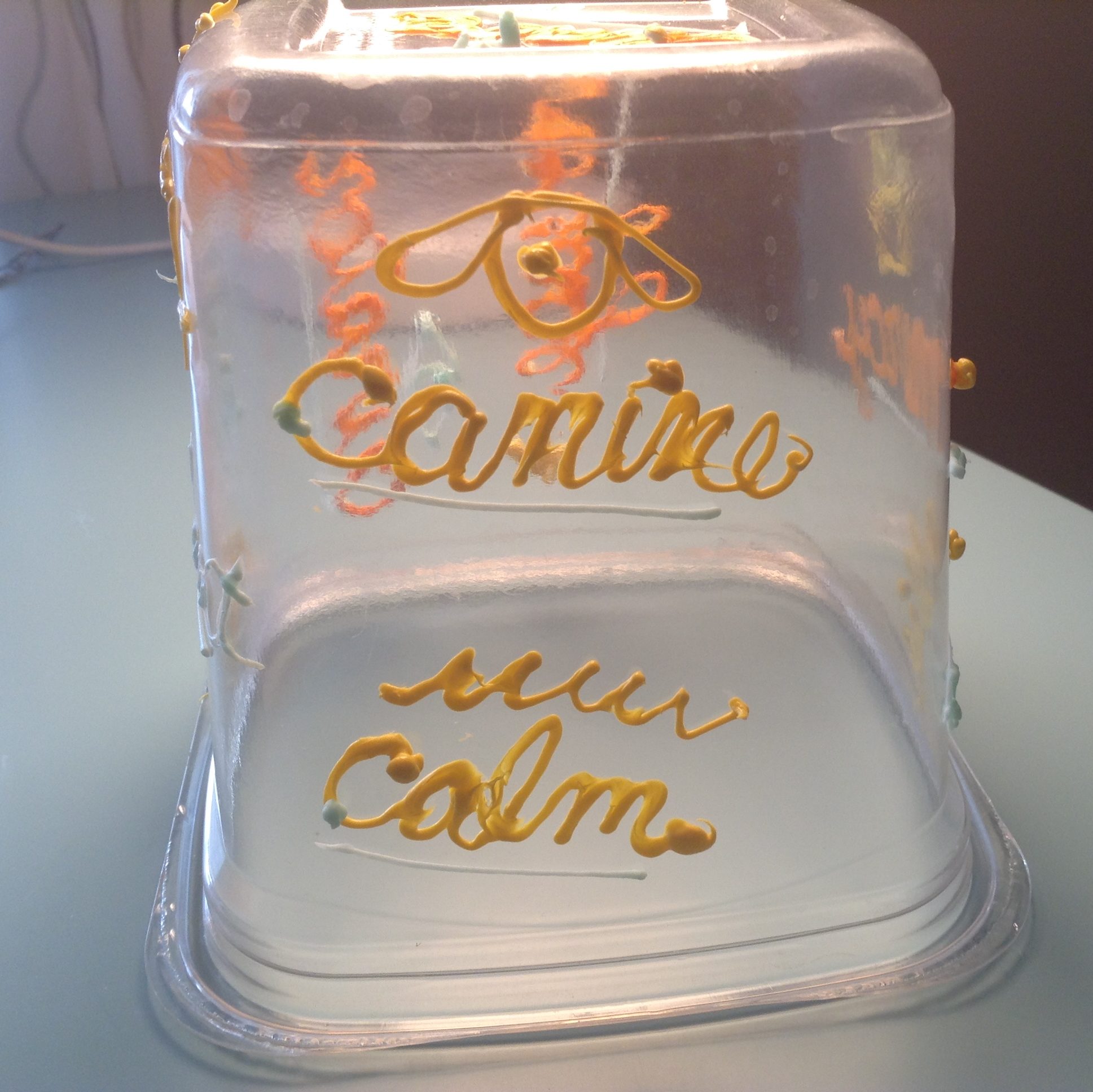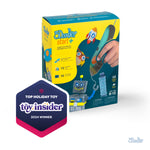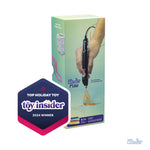Touch Text (Vocabulary)
In this lesson, students will use 3Doodler pens to create a tactile system for identifying vocabulary words and their meanings through touch. This method serves as a multi-sensory strategy to enhance recall.

KnowledgeStudents havehad practice writing in cursive.
defined and discussed the vocabulary words used in this lesson.
had practice using 3Doodler pens to Doodle words in cursive.
had practice writing in cursive.
defined and discussed the vocabulary words used in this lesson.
had practice using 3Doodler pens to Doodle words in cursive.
ObjectivesStudents willcreate a tactile system for identifying a vocabulary word and its meaning with a 3Doodler pen.
categorize words according to their meanings, e.g., synonyms, antonyms, categories, etc.
use 3Doodler pens to Doodle vocabulary words in cursive.
create a tactile system for identifying a vocabulary word and its meaning with a 3Doodler pen.
categorize words according to their meanings, e.g., synonyms, antonyms, categories, etc.
use 3Doodler pens to Doodle vocabulary words in cursive.
MaterialsStudents will need3Doodler pen (1 per group)
scrap paper (1-2 per group)
online or print dictionary (1 per group)
plastic container from supermarket (1 per group)
erasable fine point marker (1 per group)
3Doodler pen (1 per group)
scrap paper (1-2 per group)
online or print dictionary (1 per group)
plastic container from supermarket (1 per group)
erasable fine point marker (1 per group)
Lesson PlanInstructions
Step 1Whole group: Review vocabulary words and their meanings.
Step 2Identify objects through touch. Practice with different textures: smooth (an apple), rough (sand paper or rock), slick (satin), bumpy (a gourd). Blindfold students to guess the various objects through touch.
Step 3State the goal: Create a tactile vocabulary strategy in which words and their meanings can be identified through touch.
Step 4Ask students to consider different ways vocabulary words can be organized on the container. For example, words with similar meanings (synonyms) on one side, opposites (antonyms) on another.
"What other ways can we categorize words on the container?"
Step 5On the plastic container, write vocabulary words in cursive with a fine point marker in different directions and placements.
Step 6Use a 3Doodler pen to trace over vocabulary words. Work slowly. Wait 3-5 seconds at the end of a word before pulling away. Challenge students to identify these words through touch alone. It is difficult.
Step 7Use a 3Doodler pen to underline words in order to tell which way to turn the word when your eyes are closed. Place a raised dot on the first letter of each word to further identify it while sightless. Create an icon placed above each word to identify its meaning.
For example:
ally = a peace symbol
"This helps me to remember that the word 'ally' used as noun means to unite by a single purpose."
Note the meaning of the word "mnemonic" as a tool to help one remember something.
Step 8Ask students what other textural identifiers they could add to a word to help identify the word through touch alone, such as a wavy line under or over it, raised dots, slashes, circling it, etc.
Step 9Divide students into small groups.
1) Assign the vocabulary list.
2) Hand out paper and pencil to sketch a plan on how to organize the words on the container. Have them discuss Doodling specific icons that relate the word's meaning.
3) Check each group's plan before handing out the 3Doodler pens.
Step 10Hand out the 3Doodler pens, plastic containers and erasable markers to the groups. Instruct students to work together in order to create a tactile identifier for each vocabulary word.
Step 11Circle to assist and assess as students are working.
Whole group: Review vocabulary words and their meanings.
Identify objects through touch. Practice with different textures: smooth (an apple), rough (sand paper or rock), slick (satin), bumpy (a gourd). Blindfold students to guess the various objects through touch.
State the goal: Create a tactile vocabulary strategy in which words and their meanings can be identified through touch.
Ask students to consider different ways vocabulary words can be organized on the container. For example, words with similar meanings (synonyms) on one side, opposites (antonyms) on another.
"What other ways can we categorize words on the container?"
On the plastic container, write vocabulary words in cursive with a fine point marker in different directions and placements.
Use a 3Doodler pen to trace over vocabulary words. Work slowly. Wait 3-5 seconds at the end of a word before pulling away. Challenge students to identify these words through touch alone. It is difficult.
Use a 3Doodler pen to underline words in order to tell which way to turn the word when your eyes are closed. Place a raised dot on the first letter of each word to further identify it while sightless. Create an icon placed above each word to identify its meaning.
For example:
ally = a peace symbol
"This helps me to remember that the word 'ally' used as noun means to unite by a single purpose."
Note the meaning of the word "mnemonic" as a tool to help one remember something.
Ask students what other textural identifiers they could add to a word to help identify the word through touch alone, such as a wavy line under or over it, raised dots, slashes, circling it, etc.
Divide students into small groups.
1) Assign the vocabulary list.
2) Hand out paper and pencil to sketch a plan on how to organize the words on the container. Have them discuss Doodling specific icons that relate the word's meaning.
3) Check each group's plan before handing out the 3Doodler pens.
Hand out the 3Doodler pens, plastic containers and erasable markers to the groups. Instruct students to work together in order to create a tactile identifier for each vocabulary word.
Circle to assist and assess as students are working.
Wrap Up
Assessment
Possible Extensions
Resources
Vocabulary
mnemonic - a device such as a pattern of letters, ideas, or associations that assists in remembering something.
Educational Standards
Determine or clarify the meaning of unknown and multiple-meaning words and phrases based on grade reading and content, choosing flexibly from a range of strategies.
Students will create a new strategy for recognizing vocabulary words and their meanings through a raised touch system.
Demonstrate understanding of words by relating them to their opposites (antonyms) and to words with similar but not identical meanings (synonyms).
Students will identify ways that words can be categorized, organized or sorted on the container, e.g., synonyms, antonyms.
Define a simple design problem that can be solved through the development of an object, tool, process, or system and includes several criteria for success and constraints on materials, time, or cost.
Students will work in pairs to meet selected criteria in order to construct a tactile mnemonic method for recall of vocabulary words and their meanings.
Generate and compare multiple possible solutions to a problem based on how well each is likely to meet the criteria and constraints of the problem.
Students will work in pairs to sketch various design possibilities and configurations before dooding on a plastic container.
Plan and create a design document to illustrate thoughts and ideas in a sequential (step-by-step) manner (e.g., story map, storyboard, sequential graphic organizer).
Students will create a plan for the organization and placement of vocabulary words, along with related icons on scrap paper before doodling.
Decompose (break down) a larger problem into smaller sub-problems with teacher guidance or independently.
Students will break down the process of creation into brainstorming, planning and Doodling.
Use technology to seek feedback that informs and improves their practice and to demonstrate their learning in a variety of ways.
Students will use a 3Doodler pen to visually demonstrate the meaning of vocabulary words and enhance recall through a tactile mnemonic system.
Exhibit a tolerance for ambiguity, perseverance and the capacity to work with open-ended problems.
Students will demonstrate willingness and competency within an open-ended task with more than one possible outcome.
Create original works or responsibly repurpose or remix digital resources into new creations.
Students will create an original system of tactile vocabulary words as a strategy to aid in recall.
Use collaborative technologies to work with others, including peers, experts or community members, to examine issues and problems from multiple viewpoints.
Students will create original tactile vocabulary systems based on group input, collaboration, problem solving and testing.





